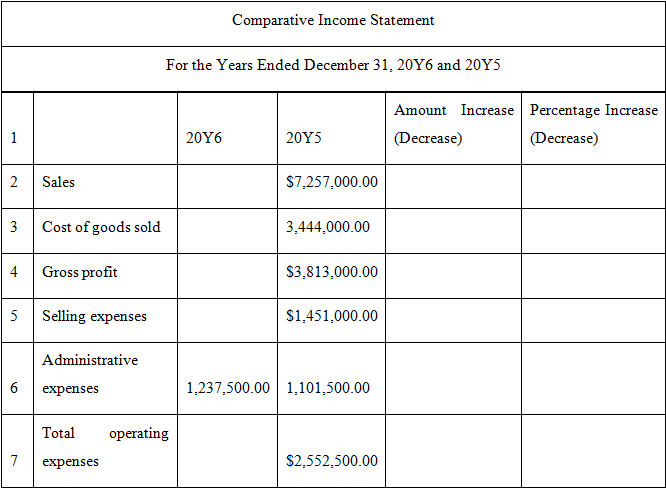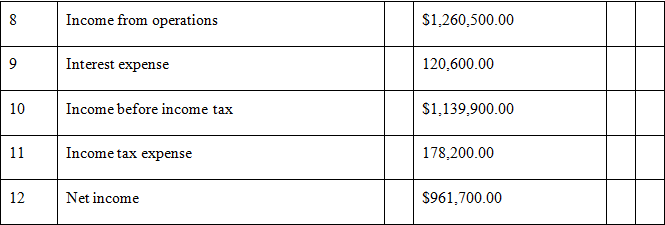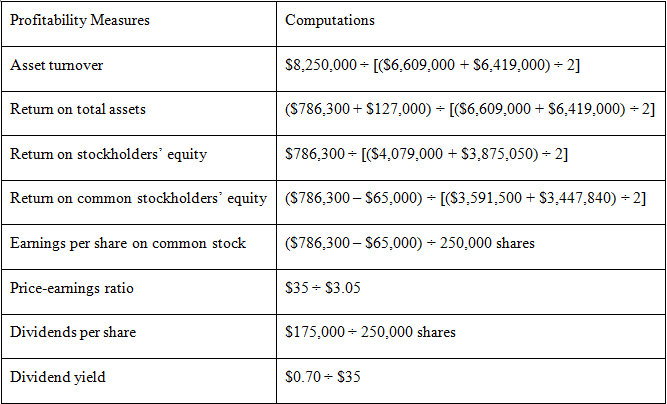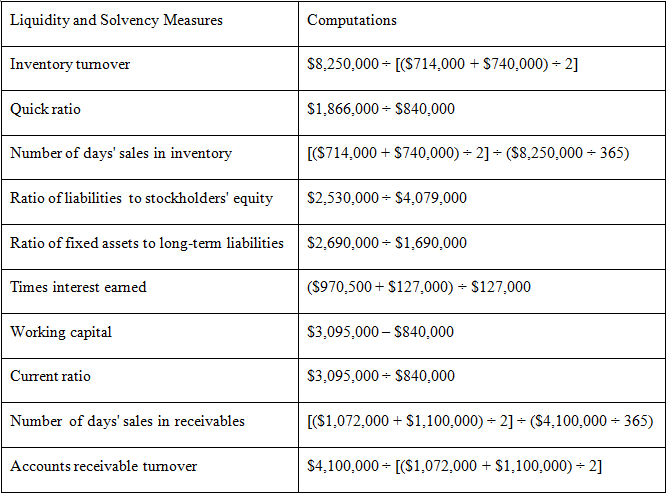Use the following comparative income statement form to enter amounts you identify from the computations on the Liquidity and Solvency Measures panel and on the
Use the following comparative income statement form to enter amounts you identify from the computations on the Liquidity and Solvency Measures panel and on the Profitability Measures panel. Compute any missing amounts and complete the horizontal analysis columns. Enter percentages as decimal amounts, rounded to one decimal place. When rounding, look only at the figure to the right of one decimal place. If




1 2 3 5 4 Gross profit 6 Sales 7 Cost of goods sold Selling expenses Administrative expenses Total operating expenses For the Years Ended December 31, 20Y6 and 20Y5 Comparative Income Statement 20Y6 20Y5 $7,257,000.00 3,444,000.00 $3,813,000.00 $1,451,000.00 1,237,500.00 1,101,500.00 $2,552,500.00 Amount Increase Percentage Increase (Decrease) (Decrease) 9 10 11 12 Income from operations Interest expense Income before income tax Income tax expense Net income $1,260,500.00 120,600.00 $1,139,900.00 178,200.00 $961,700.00 Profitability Measures Asset turnover Return on total assets Computations Price-earnings ratio Dividends per share Dividend yield $8,250,000+ [($6,609,000 + $6,419,000) + 2] ($786,300+ $127,000) [($6,609,000+ $6,419,000) +2] Return on stockholders' equity Return on common stockholders' equity ($786,300-$65,000) [($3,591,500+$3,447,840) + 2] Earnings per share on common stock $786,300+ [($4,079,000+ $3,875,050) + 2] ($786,300-$65,000) + 250,000 shares $35 - $3.05 $175,000+250,000 shares $0.70 + $35 Liquidity and Solvency Measures Inventory turnover Quick ratio Number of days' sales in inventory Ratio of liabilities to stockholders' equity Ratio of fixed assets to long-term liabilities Times interest earned Working capital Current ratio Number of days' sales in receivables Accounts receivable turnover Computations $8,250,000+ [($714,000+ $740,000) + 2] $1,866,000+ $840,000 [($714,000+ $740,000)2]($8,250,000+ 365) $2,530,000+ $4,079,000 $2,690,000+ $1,690,000 ($970,500+ $127,000) + $127,000 $3,095,000-$840,000 $3,095,000+ $840,000 [($1,072,000+ $1,100,000)+2] ($4,100,000 + 365) $4,100,000+ [($1,072,000+ $1,100,000) + 2]
Step by Step Solution
3.42 Rating (161 Votes )
There are 3 Steps involved in it
Step: 1
Comparative Income Statement 1 20Y6 20Y5 Amount Increase ...
See step-by-step solutions with expert insights and AI powered tools for academic success
Step: 2

Step: 3

Document Format ( 2 attachments)
609123a75e4db_22162.pdf
180 KBs PDF File
609123a75e4db_22162.docx
120 KBs Word File
Ace Your Homework with AI
Get the answers you need in no time with our AI-driven, step-by-step assistance
Get Started


